Abstract
1. The responses of forty-one muscle spindle endings, mostly in tibialis anterior, were studied in human subjects during voluntary movements of the ankle joint performed at various speeds against different external loads. 2. During slow shortening contractions, the discharge rates of spindle endings in the contracting muscle accelerated after the appearance of the first e.m.g. potentials but before sufficient force had been generated to move the limb. With some endings, the discharge rate decreased during the shortening movement while the e.m.g. activity was increasing, but it always remained higher than before the onset of contraction. If the speed of the movement was increased fewer spindle discharges were seen during muscle shortening. If the shortening contraction was opposed by an external load, so that greater effort was required to perform the same movement, more discharges were seen and the discharge pattern became less modulated by the change in muscle length. 3. These findings indicate that during shortening contractions the fusimotor system is activated together with the skeletomotor system. However, the fusimotor drive is generally insufficient to maintain a significant spindle discharge unless movement is slow or the muscle is shortening against an external load. 4. During lengthening contractions the spindle responses were greater than to passive stretch of similar amplitude and velocity, suggesting heightened fusimotor outflow. 5. During shortening and lengthening contractions small iregularities in the speed of movement occurred commonly. Unintended acceleration of a shortening movement caused a pause in spindle firing, and unintended acceleration of a lengthening movement caused an increased discharge from spindle endings. These spindle responses were associated with corresponding alterations in the discharge pattern of the voluntarily activated motor units at latencies consistent with the operation of spinal reflex mechanisms. 6. It is suggested that a functional role for the fusimotor activation during slow shortening contractions is to provide spindle endings with a background discharge so that they can detect irregularities in the movement and initiate the appropriate reflex correction.
Full text
PDF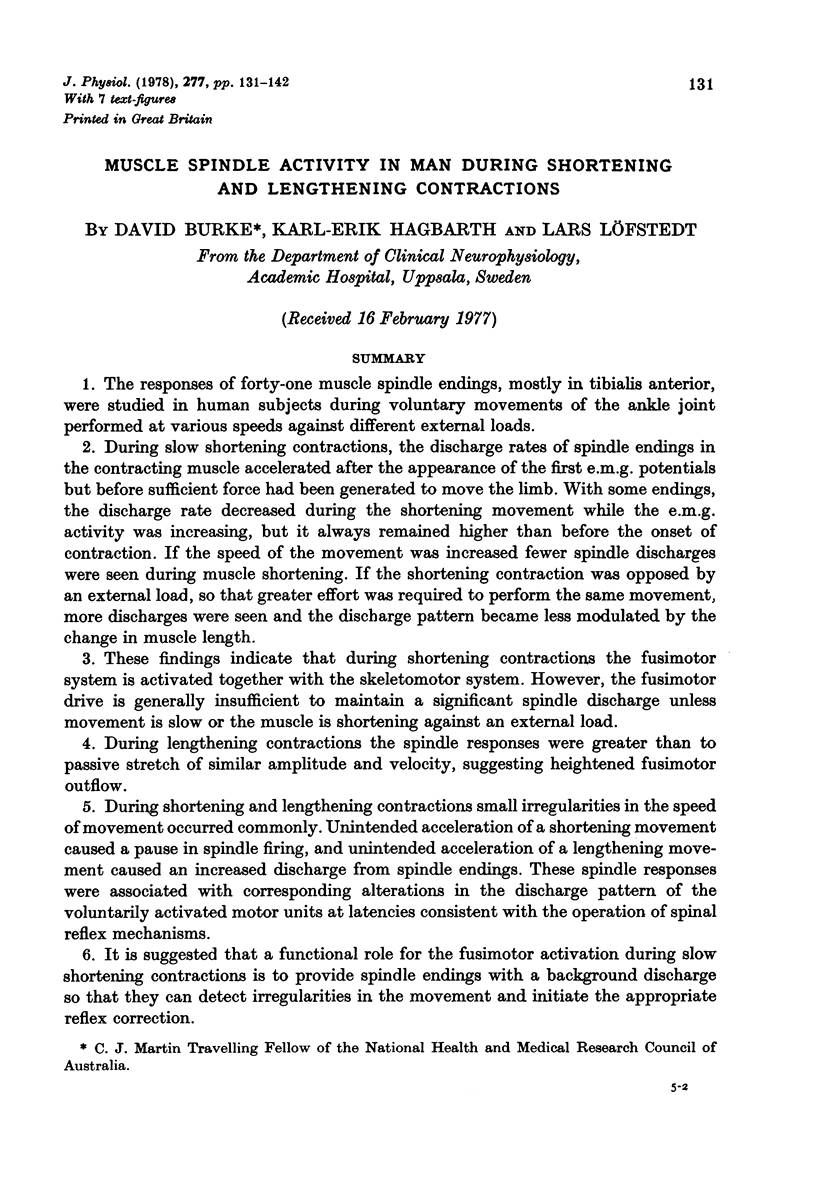
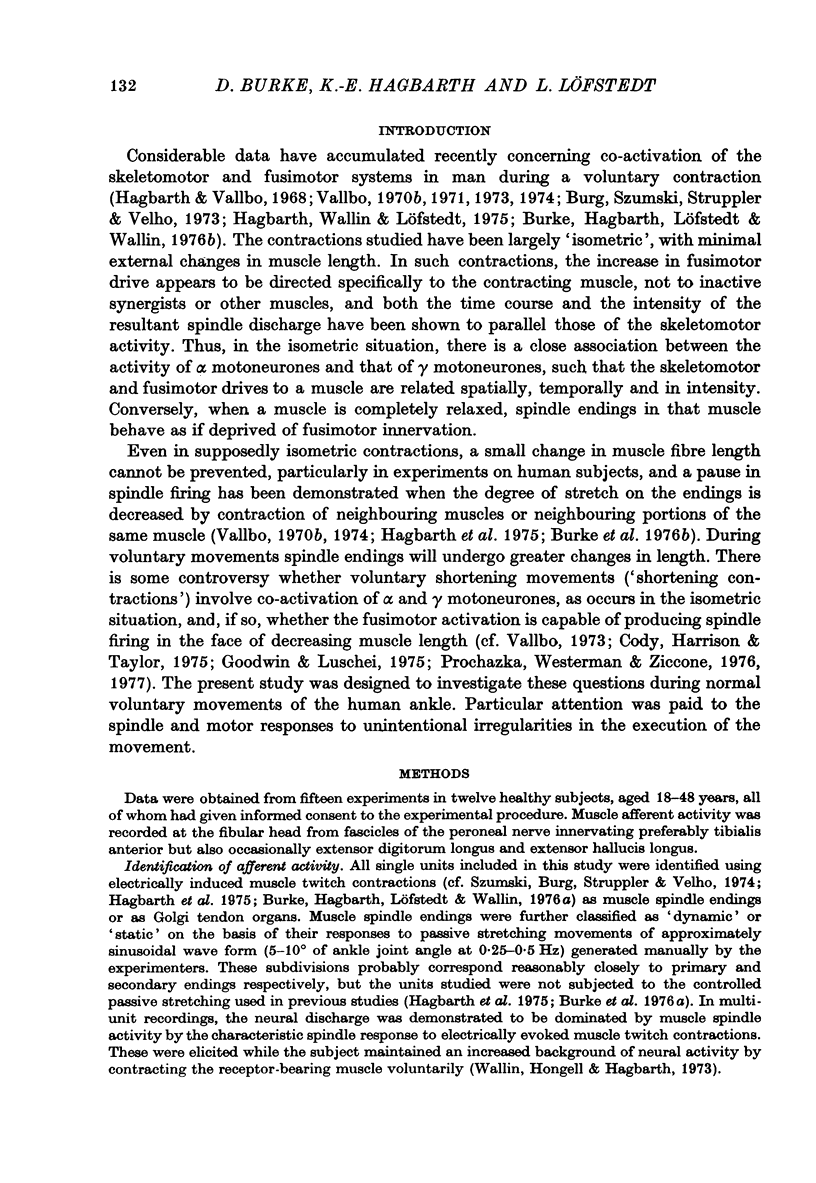
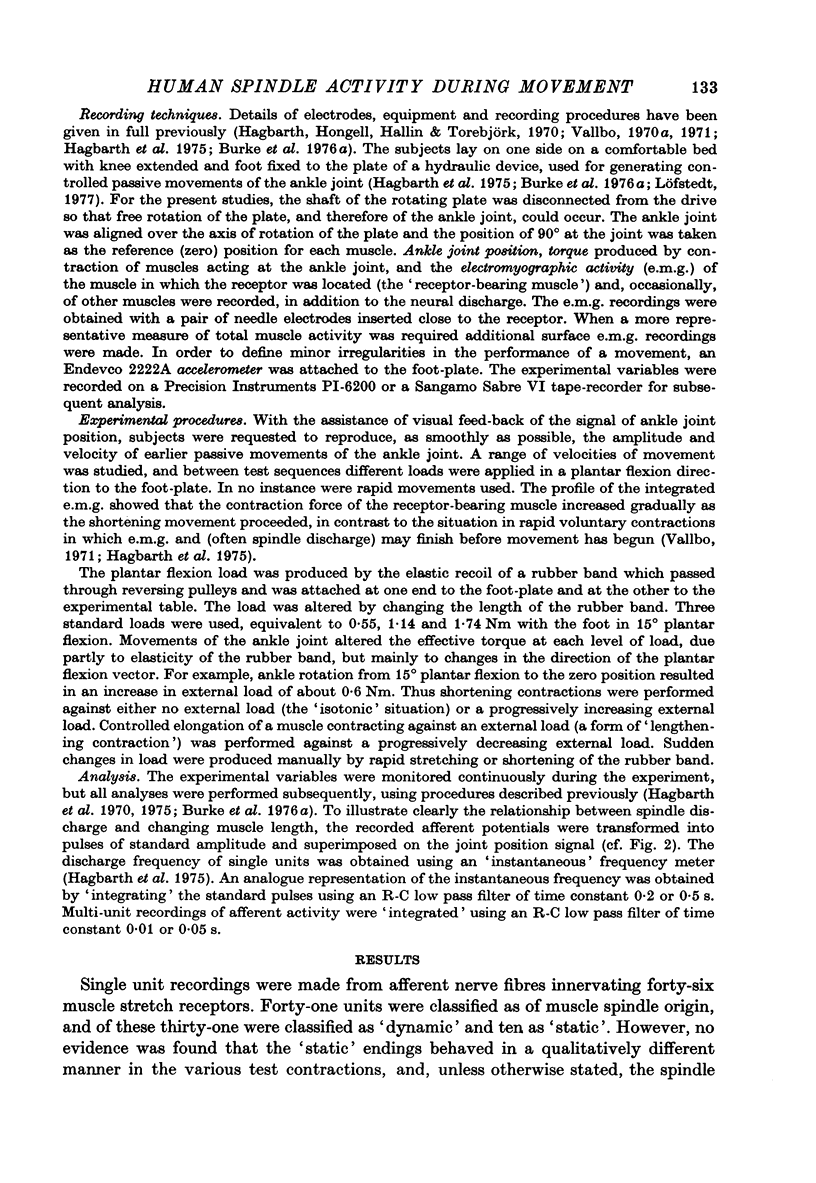
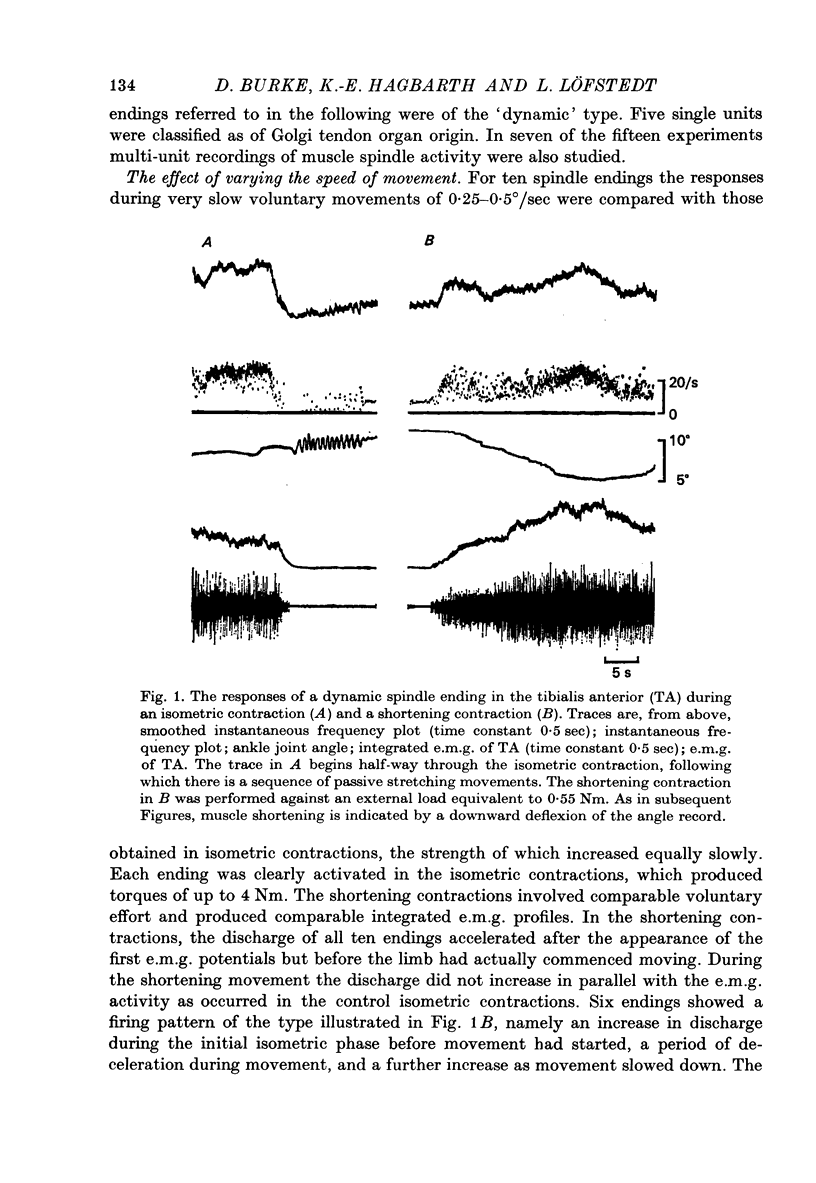
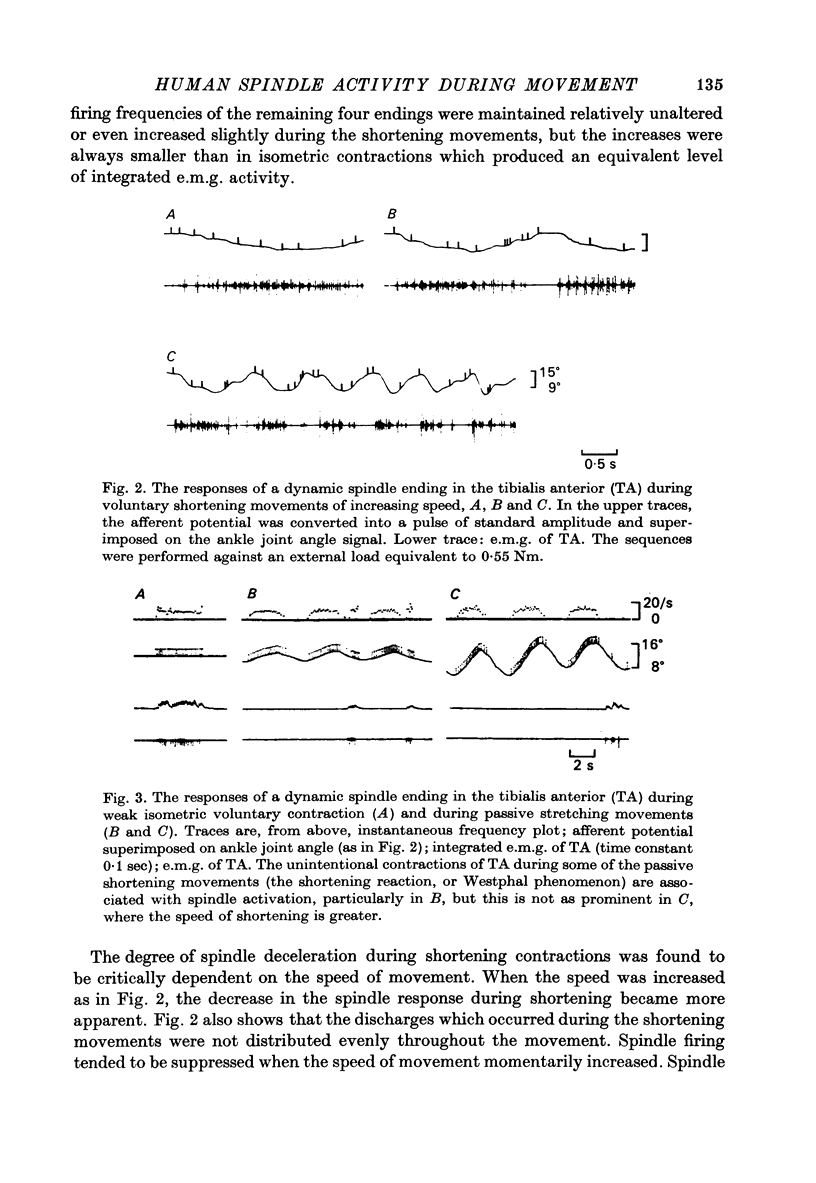

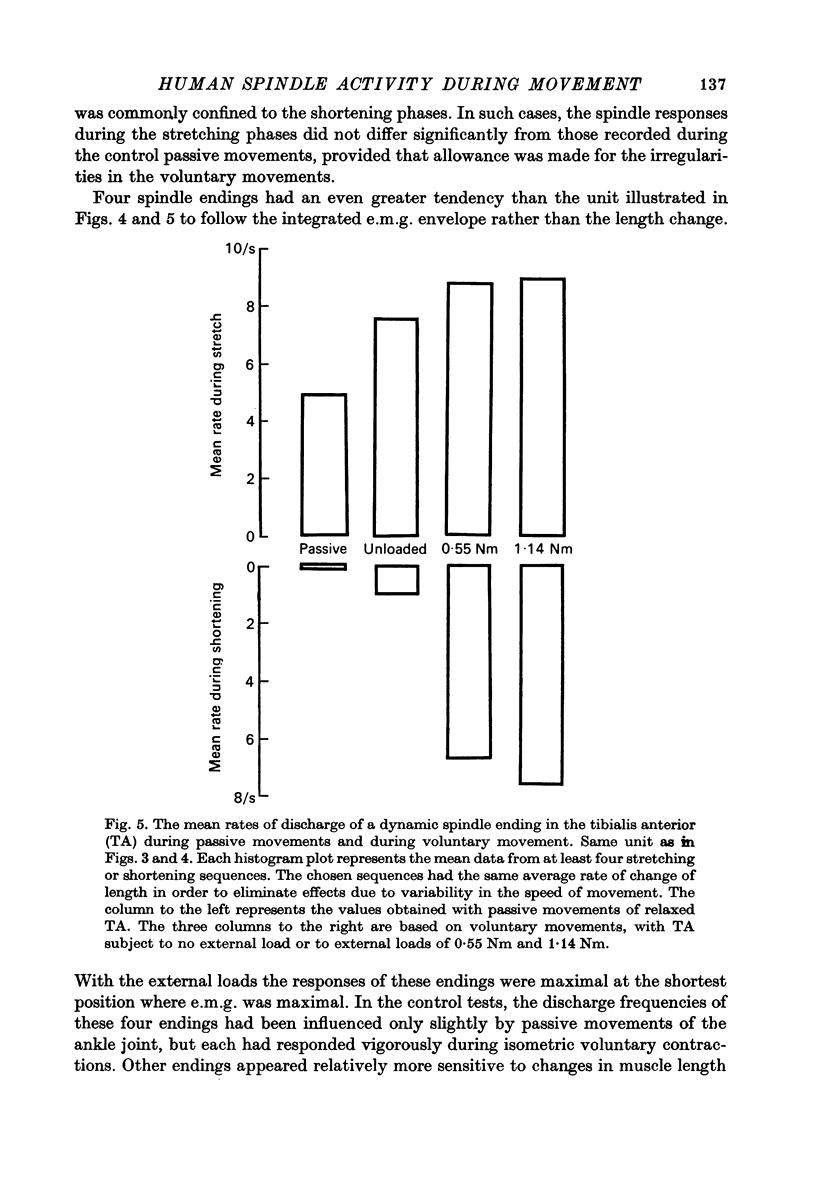


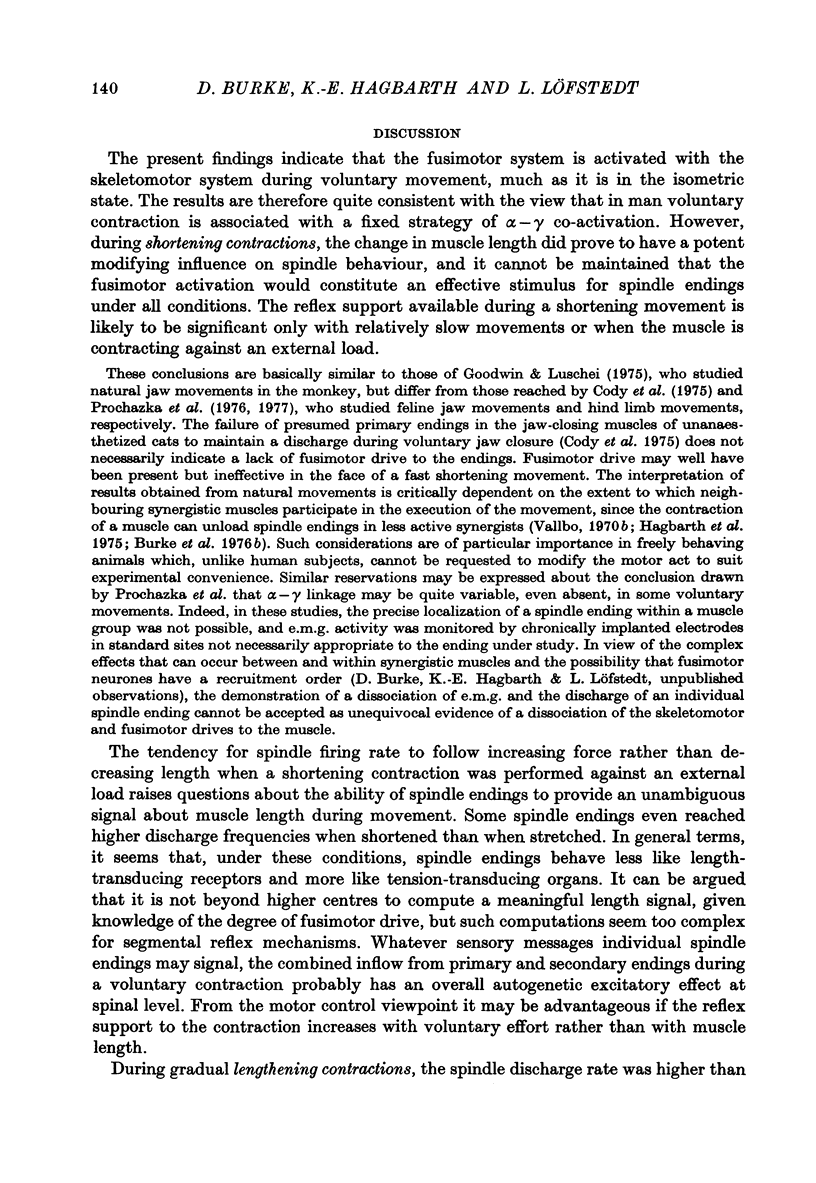
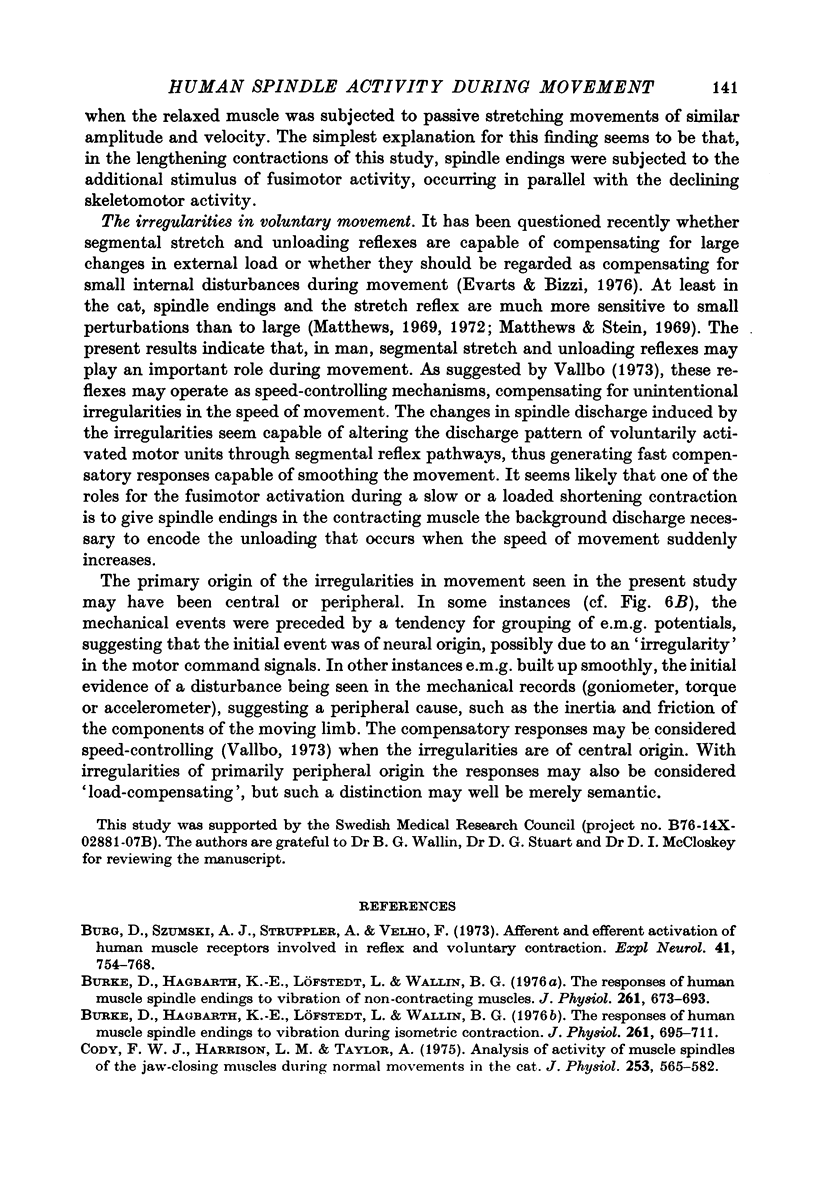
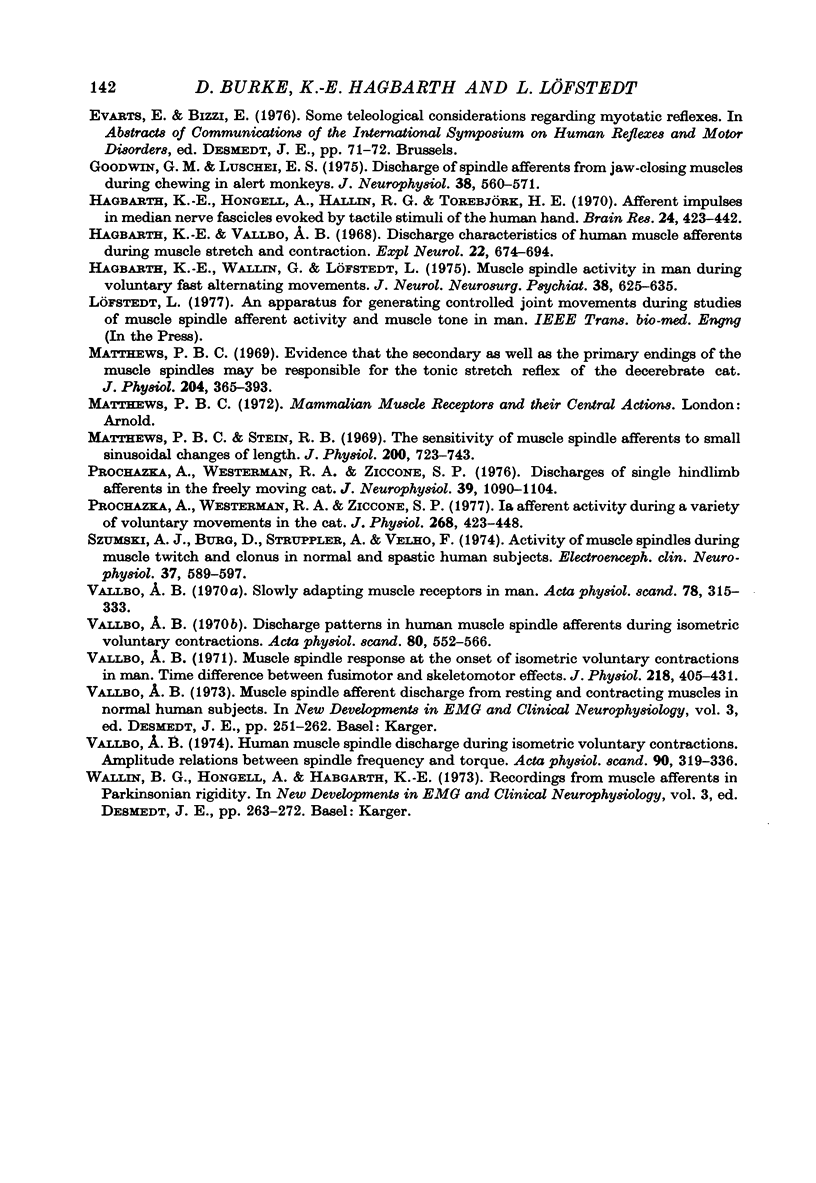
Selected References
These references are in PubMed. This may not be the complete list of references from this article.
- Burg D., Szumski A. J., Struppler A., Velho F. Afferent and efferent activation of human muscle receptors involved in reflex and voluntary contraction. Exp Neurol. 1973 Dec;41(3):754–768. doi: 10.1016/0014-4886(73)90066-6. [DOI] [PubMed] [Google Scholar]
- Burke D., Hagbarth K. E., Löfstedt L., Wallin B. G. The responses of human muscle spindle endings to vibration during isometric contraction. J Physiol. 1976 Oct;261(3):695–711. doi: 10.1113/jphysiol.1976.sp011581. [DOI] [PMC free article] [PubMed] [Google Scholar]
- Burke D., Hagbarth K. E., Löfstedt L., Wallin B. G. The responses of human muscle spindle endings to vibration of non-contracting muscles. J Physiol. 1976 Oct;261(3):673–693. doi: 10.1113/jphysiol.1976.sp011580. [DOI] [PMC free article] [PubMed] [Google Scholar]
- Cody F. W., Harrison L. M., Taylor A. Analysis of activity of muscle spindles of the jaw-closing muscles during normal movements in the cat. J Physiol. 1975 Dec;253(2):565–582. doi: 10.1113/jphysiol.1975.sp011207. [DOI] [PMC free article] [PubMed] [Google Scholar]
- Goodwin G. M., Luschei E. S. Discharge of spindle afferents from jaw-closing muscles during chewing in alert monkeys. J Neurophysiol. 1975 May;38(3):560–571. doi: 10.1152/jn.1975.38.3.560. [DOI] [PubMed] [Google Scholar]
- Hagbarth K. E., Hongell A., Hallin R. G., Torebjörk H. E. Afferent impulses in median nerve fascicles evoked by tactile stimuli of the human hand. Brain Res. 1970 Dec 18;24(3):423–442. doi: 10.1016/0006-8993(70)90183-6. [DOI] [PubMed] [Google Scholar]
- Hagbarth K. E., Vallbo A. B. Discharge characteristics of human muscle afferents during muscle stretch and contraction. Exp Neurol. 1968 Dec;22(4):674–694. doi: 10.1016/0014-4886(68)90156-8. [DOI] [PubMed] [Google Scholar]
- Hagbarth K. E., Wallen G., Löfstedt L. Muscle spindle activity in man during voluntary fast alternating movements. J Neurol Neurosurg Psychiatry. 1975 Jul;38(7):625–635. doi: 10.1136/jnnp.38.7.625. [DOI] [PMC free article] [PubMed] [Google Scholar]
- Matthews P. B. Evidence that the secondary as well as the primary endings of the muscle spindles may be responsible for the tonic stretch reflex of the decerebrate cat. J Physiol. 1969 Oct;204(2):365–393. doi: 10.1113/jphysiol.1969.sp008918. [DOI] [PMC free article] [PubMed] [Google Scholar]
- Matthews P. B., Stein R. B. The sensitivity of muscle spindle afferents to small sinusoidal changes of length. J Physiol. 1969 Feb;200(3):723–743. doi: 10.1113/jphysiol.1969.sp008719. [DOI] [PMC free article] [PubMed] [Google Scholar]
- Prochazka A., Westerman R. A., Ziccone S. P. Discharges of single hindlimb afferents in the freely moving cat. J Neurophysiol. 1976 Sep;39(5):1090–1104. doi: 10.1152/jn.1976.39.5.1090. [DOI] [PubMed] [Google Scholar]
- Prochazka A., Westerman R. A., Ziccone S. P. Ia afferent activity during a variety of voluntary movements in the cat. J Physiol. 1977 Jun;268(2):423–448. doi: 10.1113/jphysiol.1977.sp011864. [DOI] [PMC free article] [PubMed] [Google Scholar]
- Szumski A. J., Burg D., Struppler A., Velho F. Activity of muscle spindles during muscle twitch and clonus in normal and spastic human subjects. Electroencephalogr Clin Neurophysiol. 1974 Dec;37(6):589–597. doi: 10.1016/0013-4694(74)90072-8. [DOI] [PubMed] [Google Scholar]
- Vallbo A. B. Discharge patterns in human muscle spindle afferents during isometric voluntary contractions. Acta Physiol Scand. 1970 Dec;80(4):552–566. doi: 10.1111/j.1748-1716.1970.tb04823.x. [DOI] [PubMed] [Google Scholar]
- Vallbo A. B. Slowly adapting muscle receptors in man. Acta Physiol Scand. 1970 Mar;78(3):315–333. doi: 10.1111/j.1748-1716.1970.tb04667.x. [DOI] [PubMed] [Google Scholar]


